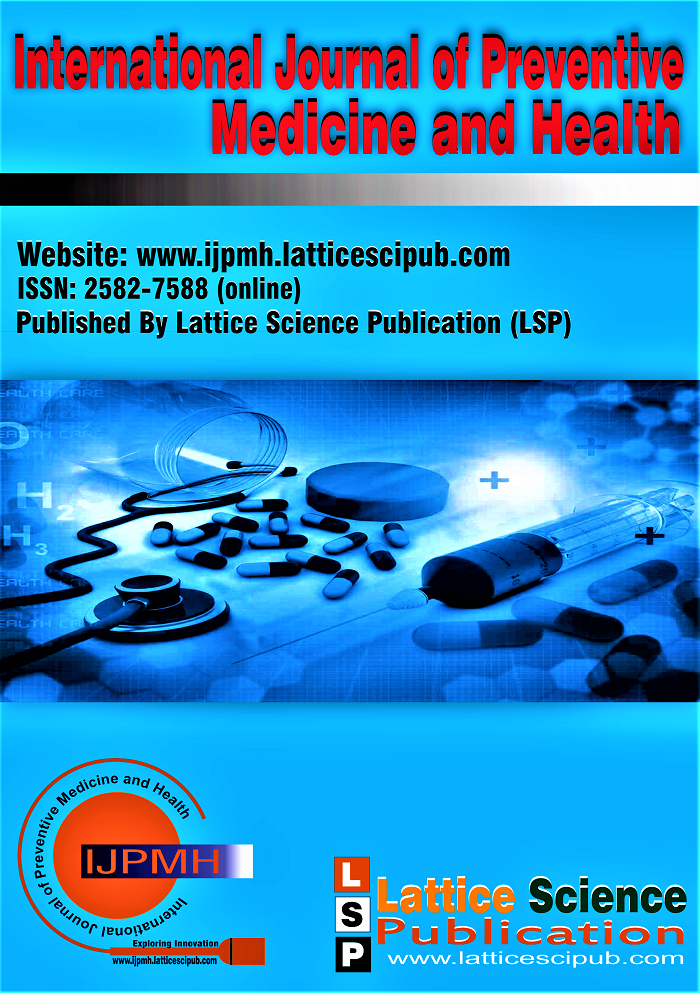Advancing Diagnostic Accuracy in Lung Disease Severity Classification Using Multi-Domain Features
Main Article Content
Abstract
Accurate classification of lung diseases is crucial for early diagnosis and effective treatment. This study presents an optimised classification framework that utilises multi-domain feature extraction and a deep neural network (DNN) for categorising lung disease severity from CT scan images. The dataset collected from a local hospital includes 266 CT scans of Lung cancer, COVID-19, and pneumonia, categorized into mild (43 images), moderate (82 photos), and severe (141 images) cases. To address class imbalance, the synthetic minority oversampling technique (SMOTE) was applied, ensuring equal representation across categories. A total of 30 multi-domain features were extracted using a comprehensive feature extraction methodology that combined wavelet packet decomposition (WPD) with statistical, texture, shape, edge detection and Grey Level Cooccurrence Matrix (GLCM) features. These features captured diverse spatial and frequency-based characteristics of lung disease patterns, enabling robust model input. This study focuses on classification based on the severity of patient condition within three different classes: Mild, Moderate, and Severe, related to lung disease. The classification was performed using a Deep Neural Network (DNN) with fine-tuned hyperparameters. The model achieved a training accuracy of 95%. The findings underline the potential of this approach in improving automated diagnostic systems. The extracted features provide a comprehensive representation of disease patterns, while the DNN leverages these features for precise classification. This methodology offers valuable insights for applications in medical imaging. This research contributes to the field of medical image analysis by integrating robust feature extraction techniques with advanced classification models, paving the way for more accurate and reliable lung disease diagnosis.
Downloads
Article Details

This work is licensed under a Creative Commons Attribution-NonCommercial-NoDerivatives 4.0 International License.
How to Cite
References
Sawant, P., & Sreemathy, R. (2022, December). A Review of Texture Feature Analysis in Chest Computed Tomography Images for the Detection and Classification of Pulmonary Diseases. In International Conference on Communication and Intelligent Systems (pp. 463-475). Springer Nature Singapore. DOI: https://doi.org/10.1007/978-981-99-2100-3_36
Dharmalingam, V., & Kumar, D. (2022). A hybrid feature selection model for the classification of lung disorders. Journal of Ambient Intelligence and Humanized Computing, 13(12), 5609-5625. DOI: https://doi.org/10.1007/s12652-021-03224-7
Goyal, S., & Singh, R. (2023). Detection and classification of lung diseases for pneumonia and COVID-19 using machine and deep learning techniques. Journal of Ambient Intelligence and Humanized Computing, 14(4), 3239-3259. DOI: https://doi.org/10.1007/s12652-021-03464-7
Bourouis, S., Alroobaea, R., Rubaiee, S., & Ahmed, A. (2020). Toward effective medical image analysis using hybrid approaches—Review, challenges, and applications. Information, 11(3), 155. DOI: https://doi.org/10.3390/info11030155
Ali, N. T., El Abbadi, N. K., & Ghandour, A. M. (2024). Lung cancer detection using wavelet transform with deep learning algorithms. BIO Web of Conferences, 97, 00050. DOI: https://doi.org/10.1051/bioconf/20249700050
Karthika, M. S., Rajaguru, H., & Nair, A. R. (2024). Wavelet feature extraction and bio-inspired feature selection for the prognosis of lung cancer—A statistical framework analysis. Measurement, 238, 115330. DOI: https://doi.org/10.2139/ssrn.4697036
Saihood, A., Karshenas, H., & Nilchi, A. R. N. (2022). Deep fusion of grey-level co-occurrence matrices for lung nodule classification. PLOS One, 17(9), e0274516. DOI: https://doi.org/10.1371/journal.pone.0274516
Koshta, V., Singh, B. K., Behera, A. K., & TG, R. (2024). Fourier decomposition-based automated classification of healthy, COPD, and asthma using single-channel lung sounds. IEEE Transactions on Medical Robotics and Bionics.] DOI: https://doi.org/10.1109/TMRB.2024.3408325
Abdulazeez, A. M., Zeebaree, D. Q., & Abdulqader, D. M. (2020). Wavelet applications in medical images: A review. Transform. DWT, 21,22.URL: https://www.researchgate.net/publication/341977072_Wavelet_Applications_in_Medical_Images_A_Review
Serte, S., Dirik, M. A., & Al-Turjman, F. (2022). Deep learning models for COVID-19 detection. Sustainability, 14(10), 5820.
DOI: https://doi.org/10.3390/su14105820
Mahmood, S. A., & Ahmed, H. A. (2022). An improved CNN-based architecture for automatic lung nodule classification. Medical & Biological Engineering & Computing, 60(7), 1977-1986. DOI: https://doi.org/10.1007/s11517-022-02578-0
Kaur, B., Goyal, B., & Dogra, A. (2023, March). A hybrid feature-based model development for computer-aided diagnosis of lung cancer. In 2023 10th International Conference on Computing for Sustainable Global Development (INDIA Com) (pp. 1031-1036).
URL: https://ieeexplore.ieee.org/stamp/stamp.jsp?tp=&arnumber=10112386&tag=1
Piffer, S., Ubaldi, L., Tangaro, S., Retico, A., & Talamonti, C. (2024). Tackling the small data problem in medical image classification with artificial intelligence: A systematic review. Progress in Biomedical Engineering. DOI: https://doi.org/10.1088/2516-1091/ad525b
Chamseddine, E., Mansouri, N., Soui, M., & Abed, M. (2022). Handling class imbalance in COVID-19 chest X-ray image classification: Using SMOTE and weighted loss. Applied Soft Computing, 129, 109588. DOI: https://doi.org/10.1016/j.asoc.2022.109588
Koetzier, L. R., Wu, J., Mastrodicasa, D., Lutz, A., Chung, M., Koszek, W. A., ... & Willemink, M. J. (2024). Generating synthetic data for medical imaging. Radiology, 312(3), e232471. DOI: https://doi.org/10.1148/radiol.232471
Ali, I., Muzammil, M., Haq, I. U., Amir, M., & Abdullah, S. (2021). Deep feature selection and decision-level fusion for lung nodule classification. IEEE Access, 9, 18962-18973. DOI: https://doi.org/10.1109/ACCESS.2021.3054735
Krstinić, D., Braović, M., Šerić, L., & Božić-Štulić, D. (2020). Multi-label classifier performance evaluation with a confusion matrix. Computer Science & Information Technology, 1, 1-14. DOI: https://doi.org/10.5121/csit.2020.100801
Carrington, A. M., Manuel, D. G., Fieguth, P. W., Ramsay, T., Osmani, V., Wernly, B., ... & Holzinger, A. (2021). Deep ROC analysis and AUC as balanced average accuracy to improve model selection, understanding, and interpretation. arXiv preprint arXiv:2103.11357. DOI: https://doi.org/10.1109/TPAMI.2022.3145392
Al-qaness, M. A., Zhu, J., Al-Alimi, D., Dahou, A., Alsamhi, S. H., Abd Elaziz, M., & Ewees, A. A. (2024). Chest X-ray images for lung disease detection using deep learning techniques: A comprehensive survey. Archives of Computational Methods in Engineering, 31(6), 3267-3301. DOI: https://doi.org/10.1007/s11831-024-10081-y
Karalis, V. D. (2024). The integration of artificial intelligence into clinical practice. Applied Biosciences, 3(1), 14-44.





